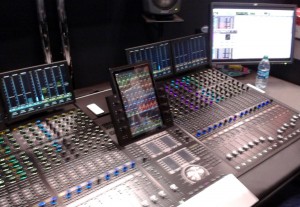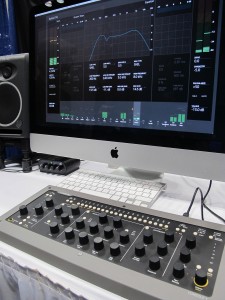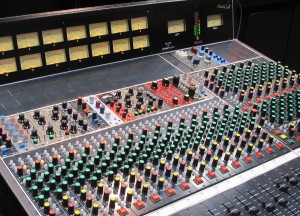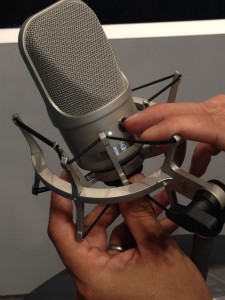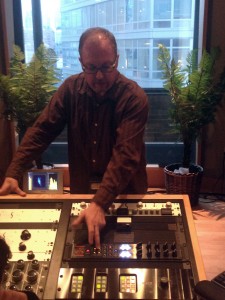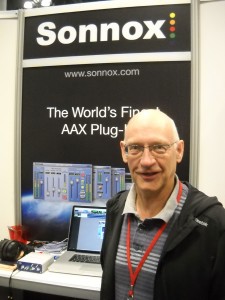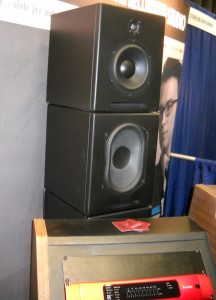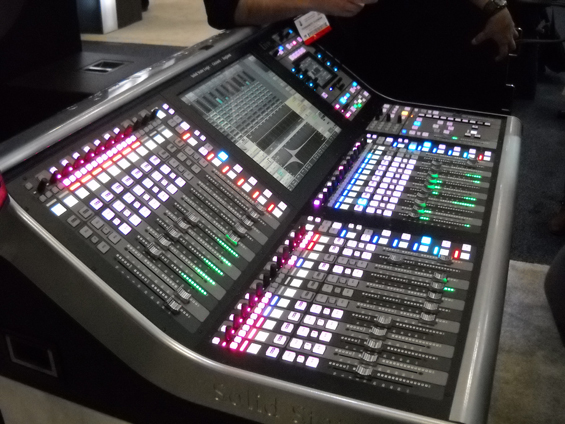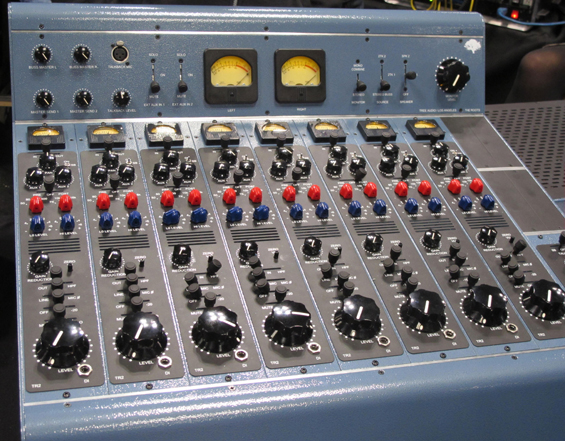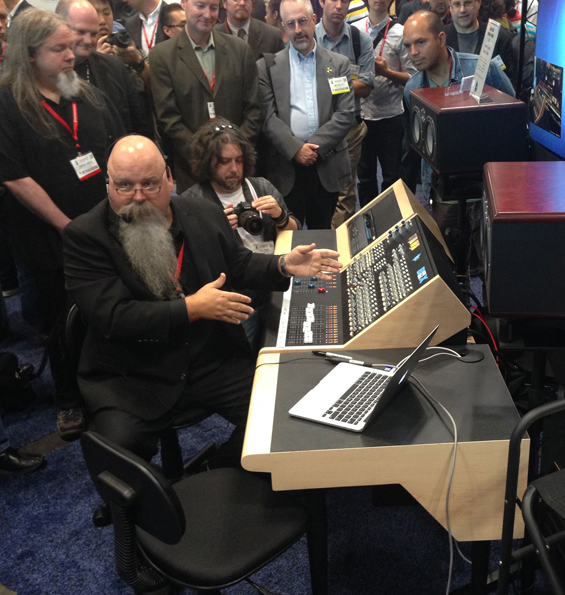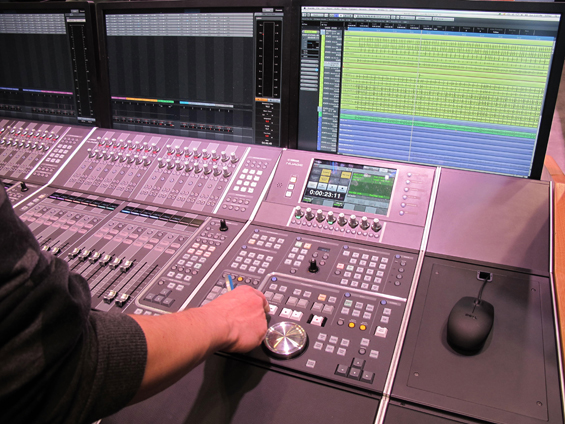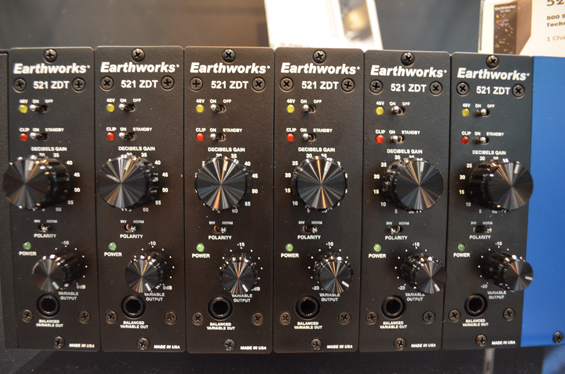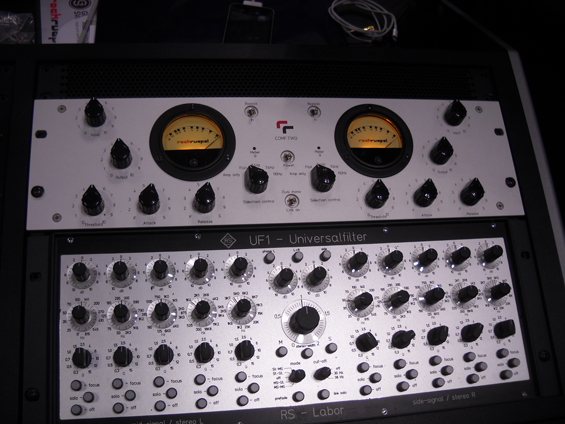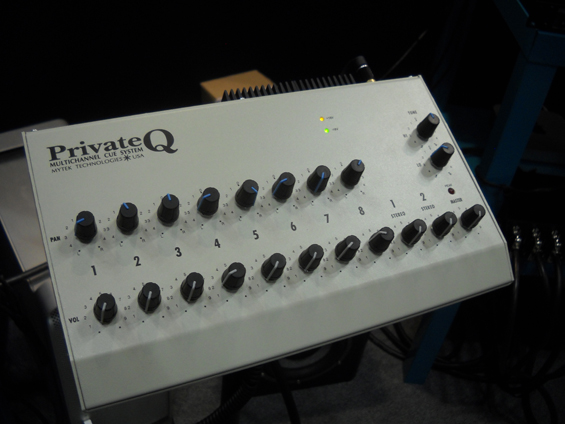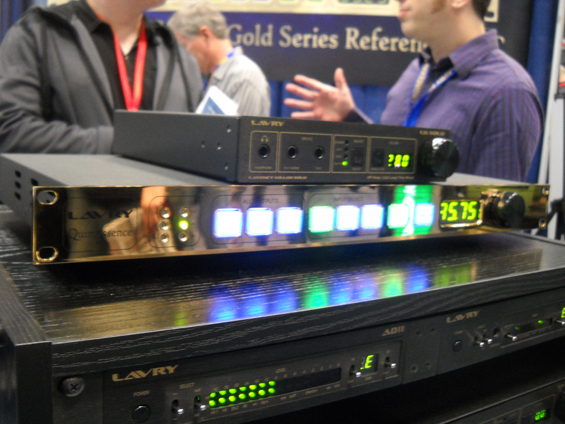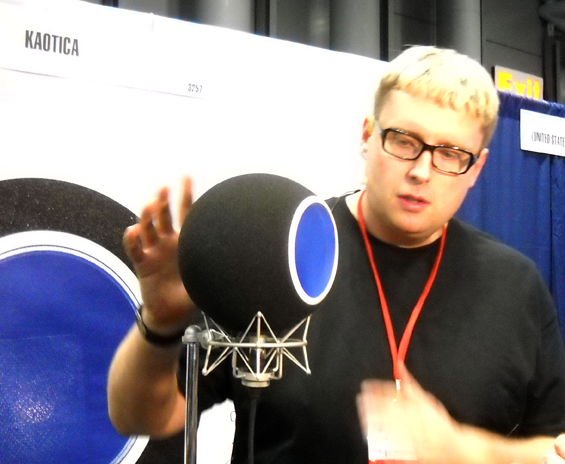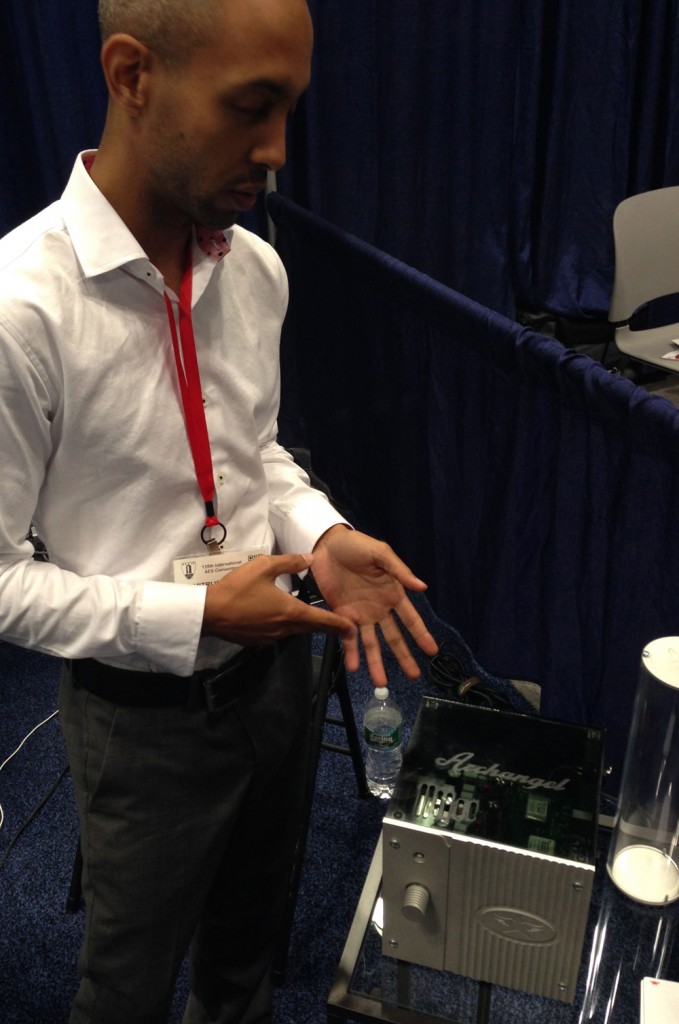AES 2013 New Gear Highlights
For the first time in a while, there was an unmistakable optimism in the air at the New York AES Convention. There was a memorable show downstairs, from the overflowing special events to the in-depth technical panels and workshops.
Up on the showroom floor, the displays weren’t quite expansive as they have been in boom years, but most of the great stalwarts of the pro audio business were present. Several of them had a few new tricks up their sleeves.
Next-Generation Control Surfaces
The biggest line at AES 2012 was undeniably for Slate’s Raven multi-touch control surface.
This year, that award goes to Avid‘s new S6 series console. At peak hours, there was a significant line to get even a quick glance at this new and comprehensive control surface.
The S6 is one of the first control surfaces we’ve seen that seems appealing to many engineers who have long been attached to the analog experience.
It’s a console that promises to bring an immersive, listening-focused workflow to the digital domain, while seamlessly integrating with your DAW. Looking at the S6, it can be hard for even the most die-hard analog console lover not to feel just a little bit outclassed.
The S6 was introduced just one month ago, and in that short time, an inside source says that over 150 had already been sold – before AES even began.
It comes in at a higher pricepoint than some control systems. According to Avid’s Tony Cariddi (via the Avid Blog), the price of the S6 M10 configuration starts out at about $22K and scales from there depending on the size and selection of M10 or M40 master module. But compared to an analog console that could barely do half as much come mixdown time, the S6 could be considered an honest steal.
Of course, Avid wasn’t the only company to unveil a huge leap forward in digital workstations.
This year, Yamaha teamed up with Steinberg to take an alternate approach to a forward-looking mixing desk. Their collaboration is called Nuage.
Where Avid’s S6 gets the screens out of the way for an analog-like mixing experience, the Nuage brings them front and center.
It’s a desk that has all the perks of a tactile control surface, plus an incredible amount of screen real estate, making it seem like a natural fit for post-production work, and mixers who prefer more visual control over their audio. It’s been engineered to work seamlessly with Steinberg’s Nuendo.
On the scaled-down side of things, Softube introduced Console One, a combination hardware/software mixer that aims to bring analog feel and workflow to small DAW-based studios.
The Console One is a truly new concept that’s hard to explain in just a few words. It integrates with any DAW, removing all of the visual clutter and providing hands on control of a virtual SSL 4000 console. It allows you to take intuitive, hands-on control of your mix, channel-by-channel. Fans of the brand can also load up any of Softube’s other mojo-licious hardware-emulating plugins, right within the proprietary Console One mixing software.
Analog Consoles
There were also exciting new mixers on the all-analog front.
In 2012, Tree Audio introduced a beautiful small-format tube hybrid desk, called “Roots” and it caught eyes again this year. This is an 8 Channel/2 Buss console with all tube EQ and limiter on each channel, and four slots for 500 Series modules.
New on the front in 2013 is API‘s “The Box.” This is API’s bold effort to bring their all-analog sound and feel to small studios. The Box offers four input channels stocked with API’s famous mic pres. Two include API’s equally famed 550A EQs, and the other two come with customizable 500-series slots. On mixdown, up to 20 channels are available.
There’s also three auxiliaries, monitor control, a talkback system, and two API compressors that can be assigned to any channel on the desk. It is a truly comprehensive analog command center for any small room.
Also new at the show (and on display at Alto Music’s booth) was Ocean Audio’s ARK console, a Malcolm Toft-designed, customizable 500-series-based analog recording console with 16 channels (each with 2 500 slots), 8 group faders (each with another 500 slot), and up to 48 inputs available for mixdown. Click here for more details. The ARK is distributed in the US by Alto Music ($19,999 for the base with no 500 modules) and is shipping now.
SSL introduced an intriguing new live console, named, appropriately enough “SSL Live.” For studios with older SSL consoles that have a vintage computer that’s on the fritz, Dramastic Audio offers the “G Platinum Studio Computer.” It installs on an iPad and gives new life to an old leviathan.
Microphones
Many major microphone brands had booths at this year’s AES, with names from Audio-Technica to Telefunken on display.
At AES 2013, Sennheiser introduced the Neumann TLM-107, a brand new microphone design with intuitive, hands-on digital control, a softened response in the harsher upper-mid and low-treble regions, and an elegant-sounding C12-like lift above 10kHz.
A new dark horse of the mic world, Ronin Applied Sciences, returned again this year. In 2011, their Pegasus microphone made major waves on the showroom floor.
This year, they’re back again with not one but three new designs: The solid-state Dove, the vacuum tube Thunderbird, and a beautifully-designed mic preamp called Archangel. It’s the first major preamp we know of to use “passive gain” – meaning it steps up the voltage with passive magnetic transformers, and then attenuates the output using a passive rotary switch.
Another interesting new development is the quirky-looking little device called the Kaotica Eyeball. It is essentially an isolation booth in a box. (Or more accurately, in a sphere.)
The Eyeball goes around your mic, and a few inches of thick foam block out ambience and bleed. A pop filter closes over this simple contraption with the aim of giving you vocal booth quality sound in any space.
Preamps, Channel Strips and Hardware Effects
It’s always news when Mr. Rupert Neve introduces a new design. This time, his company has gone back to the beginning to unveil The Shelford Series – A faithful homage to the circuits that first made him a legendary name, with a few new features to bring them right up to date.
The first two models in this new series are the 5051, an inductor EQ/Compressor, and the 5052, a preamp and inductor EQ.
Another exciting reveal was the first ever compressor by Dangerous Music, called simply, the “Dangerous Compressor” a fantastic name for a squeezebox if there ever was one. This compressor, which was on display at Sterling Mastering in NYC, is about as transparent, flexible and powerful as they come.
It seems to be best suited for those of us who want to reshape sound significantly or subtly without ever really hearing the artifacts or coloration of a traditional comp. It offers the power and sophistication of a digital compressor with the uncompromising all-analog signal path that Dangerous is known for.
On the more colorful and vintagey end of the spectrum is the promising boutique Electronaut M97 Vari-MU compressor, coming soon from Ecstatic Electric.
Following up on the critically acclaimed comp.one, Rockruepel’s comp.two arrived with a built-in fan base. This hand-built two-channel tube compressor aims to pick up where its predecessor left off.
On the preamp front, Earthworks have now adapted their 1RU Zero Distortion Technology (ZDT) mic pres for the 500-series format with the handsome 521 ZDT.
Also on display at the Alto Music booth was the latest from Heritage Audio – the DTT-73 and TT-73 mic preamps, which put the DMA73 Class A mic pre (Neve 1073 recreation) into an appealing and versatile form factor. In this tabletop format, the TT series becomes useful for everything from live use to portable systems, temporary studios, on location and home recording, and more. The two-channel DTT-73’s MSRP is $2200, and the single channel TT-73 is $1200.
Software Effects and Processors
Many plugin designers spent much of 2013 updating their software to work with the latest game-changing iteration of Pro Tools. But there were still new offerings.
Universal Audio exhibited in the AES Partner Pavilion, showing off their new API Vision Channel Strip plugin. They also ran demos of their plugins running AAX format on PT11. This UAD version update will be available to end users by the end of the year, and will include a number of new features (including Multi-Mono Mode support) and enhancements.
SoundToys got their updates out the door earlier this year, and at AES they had a demo of their newly expanded MicroShift plugin. It’s coming soon to replace the Little MicroShift. When it arrives, it will have full support for all the native 64-bit platforms. “Our guess is weeks not months”, said our friends at SoundToys about an anticipated release date.
iZotope issued new major upgrade to two of their plugins. The popular RX2 got even more powerful this year with the unveiling of RX3. This time, the software includes a zero-latency dialogue denoiser and a stunning new de-verb module. With Nectar 2, the company’s one-stop vocal sweetening plugin also got a significant upgrade.
Waves also introduced a new product: J37 Tape. It’s a collaboration with Abbey Road that emulates the sound of the Studer J37 tape machine. Also on heavy display were the new MultiRack 9.5 live sound plugin host, and the Manny Marroquin signature series plugins.
Sonnox was showing off their Codec Toolbox, an intuitive and efficient web encoding solution. In addition to allowing you to audition codecs in real time, it provides batch encoding, metadata tools, and more.
Monitoring
We’ve saved the best for last. After all, what’s sexier than a new set of speakers?
ATC Loudspeakers were once again a hot topic of conversation, with their SCM25A Pro monitors, and new mains and custom builds available in the US. Audio engineers near New York City can hear the ATC line through Audio Power Tools, their exclusive distributor in the area, who have a retail store in Williamsburg, Brooklyn.
Guzauski-Swist‘s GS3a vertical monitors were impressing listeners in Audio Alchemist (Manley, Dangerous, etc.) demos at Sterling Sound, in conjunction with AES. The GS3a is a revolutionary three-way system that decouples the mid and high frequency drivers from the low frequency woofer through a simple but ingenious suspension system.
Steven Slate’s “three-year quest for the perfect speaker” culminated with the Siren D3, introduced this winter and on display at AES. These modular units, designed by Pierre Thomas, feature drivers that are all time-aligned via digital DSP, and offer high fidelity reproduction well below 100 Hz. The Siren D3 will be available later this year, and can be fitted with a single subwoofer, or a pair of dual subs.
Mytek had plenty of new items to show at its booth, but none was more surprising than an update to their ubiquitous headphone distribution system in the form of the PrivateQ 2. It now features a lower noise floor, increased expandability, more robust connectors, and a smaller-form-factor central unit (2RU, down from 3RU). It also now retails for $800 less than it had before.
Dan Lavry’s mathematical mastery has created a committed following when it comes to conversion. Now Lavry Engineering has taken his coveted DA924 to the next level with the Lavry Quintessence, which exceeds their previous flagship in accuracy, transparency, musicality, and dynamic range. The sneak preview of this new converter showed additional functionality on board at sample rates from 44.1kHz to 192 kHz.
See more photos from around the show floor below!
Please note: When you buy products through links on this page, we may earn an affiliate commission.







